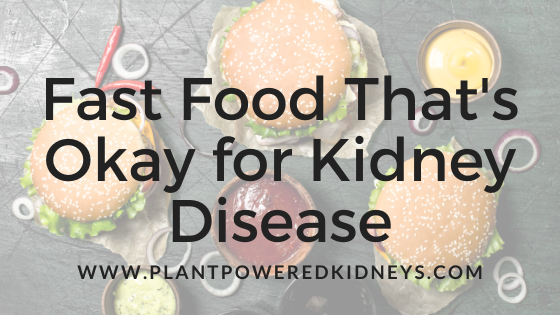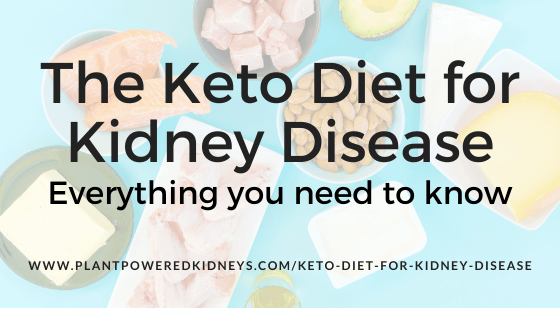Kidney patients often have to watch what they eat in order to manage their condition. This can be difficult, as many of the foods that we love are not good for our kidneys. Cereal is a breakfast favorite for many people, but it can be tricky to find good options for those with kidney problems. In this blog post, we will discuss how to find the best cereal for kidney disease. We will cover both cold cereal and hot cereal, and list different categories of cereal so that you can easily find the perfect option for you.
*This article contains affiliate links in which we may earn a small percentage of sales at no expense to you. We only ever provide affiliate links for products that we truly believe in and recommend for both myself and kidney warriors. Thank you for your support.

Table of Contents
How to Choose a Kidney-Friendly Cereal
When it comes to finding a great cereal for kidney patients, there are several nutrients to consider.
Here is a breakdown of what to focus on when looking at the nutrition facts label and ingredients list.
Serving Size
Be sure to look at the serving size on the label. The serving size of cereal can range anywhere from 1/3 cup to over 1 cup of cereal.
Therefore, eating frequent or larger portions will multiply the potassium content of the cereal. This can make a low potassium cereal turn quickly into a high potassium cereal.
Carbohydrates
Cereal is considered a carbohydrate source as the main ingredients are whole grains. It’s important to consider the types of carbohydrates in cereal as they can make for a better or worse cereal option.
Fiber
Fiber is considered a carbohydrate. It is found under the Total Carbohydrate section of the nutrition facts label.
Choose a cereal that has at least 3 grams (g) of fiber per serving.
Whole grain cereals will often provide this much fiber because of the grain itself. Some cereals will add fiber to boost the fiber content.
Added Sugars
However, less is more when it comes to added sugars. Added sugars provide extra carbohydrates and calories, without providing nutrients or benefits.
Added sugars are not kidney-friendly, but may not be completely avoidable.
Limit to 12 grams added sugar per serving.
Potassium
While this article will cover both low potassium cereal and high potassium cereal, it’s important to know the ranges when looking at the two.
A low potassium cereal should have less than 200 milligrams (mg) potassium per serving.
A high potassium cereal will have more than 200 mg potassium per serving.
Whether or not a person needs to follow a low potassium diet is up to their healthcare team. Therefore, speak with your dietitian to find out what your potassium needs are.
Phosphorus
People with kidney disease often need to watch their phosphorus intake as well.
This is because high levels of phosphorus can be harmful to the kidneys.
If you are looking for a low phosphorus cereal, there are several great options to choose from.
The cereals listed in this article for low potassium also have a low phosphorus content.
Whole grains are a source of phosphorus. However, the naturally occurring phosphorus is not well absorbed.
This is why whole grain cereals make excellent cereal for kidney patients.
Phosphorus Additives
The most important thing to look at when choosing a low phosphorus cereal is to avoid phosphorus additives.
This means avoiding cereal that has any ingredient with the letters PHOS. Some examples include
- Ferric orthoPHOSphate
- Sodium tripolyPHOSphate
- Potassium pyroPHOSphate
By avoiding ingredients like these, it’s more likely the cereal will be low in phosphorus.
Many fortified cereal options include phosphate additives. A common example of this is Cheerios cereal, which includes 250 milligrams of potassium and 10%DV of phosphorus.
Baking powder is also a hidden source of phosphorus.
Sodium
Many people need to follow a low sodium diet. Another thing to look at when choosing a cereal is the amount of sodium.
A low sodium cereal should have less than 140 milligrams (mg) of sodium per serving.
A food is considered high in sodium when it has more than 20%DV (460 mg) of sodium per serving.
Sodium in cereal can range from very low to very high amounts. Check the label for sodium while you’re also looking at phosphorus and potassium in cereal.
Labels (and ingredients) can change
The following cereals listed were reviewed by a renal dietitian and approved at the time of this article publication.
However, companies can change ingredients and nutritional content without warning.
It’s very important to routinely check cereal labels and nutrition facts.
Hot Cereal for Kidney Patients
If you are looking for a hot cereal option, there are several great low potassium and low phosphorus options to choose from.
Some examples include:
- Quaker Old Fashioned Oats*
- McCann’s Irish Oatmeal*
- Bob’s Red Mill Steel Cut Oats*
- Bob’s Red Mill 10 Grain Hot Cereal*
These cereals typically have a potassium content of less than 200 mg per serving and phosphorus content of less than 100 mg per serving.
Additionally, many of these cereals can also be made into a low protein breakfast by swapping out cow’s milk for a plant-based milk substitute instead.
Hot Cereal for Kidney Patients to Avoid
One of the most popular hot cereals many think is the best cereal for kidney disease is also one that should be avoided.
Cream of Wheat is a hot cereal made from the whole grain farina. It’s also a fortified cereal.
It’s labeled as an excellent source of iron. This is because the cereal has ferric orthoPHOSphate added.
As mentioned above, this is phosphate and is generally advised to be avoided when possible.
An easy swap is Bob’s Red Mill 10 Grain Hot Cereal. It does not have additives. It is also a low potassium cereal.
Cold Cereal for Kidney Patients
If you are looking for a cold cereal option, there are several great very low, and low potassium options to choose from.
Very Low Potassium Cereal
Many people with kidney disease need to limit potassium in their diet. Potassium is found in a wide variety of foods, including grains.
It is uncommon that someone would need to keep their potassium intake severely low. However, by choosing a very low potassium cereal, one can add higher potassium toppings.
Examples of very low potassium cereal include
- Honeycomb* (60 mg potassium)
- Honey Bunches of Oats with Real Strawberries (60 mg potassium)
- Kix (0 mg potassium)
- Forager Organic Grain-Free O’s Strawberry* (72 mg potassium)
- Cascadian Farm Honey Nut O’s* (2%DV potassium)
- Cascadian Farm Graham Crunch* (2%DV potassium)
- Nature’s Path Smartbran Cereal (0 mg potassium)
- Life Cinnamon (82 mg potassium)
- Corn Flakes (60 mg potassium)
- Arrowhead Mills Puffed Corn* (50 mg potassium)
Many very low potassium cereal options will also be lower in fiber. For this reason, it is best to only limit to this category when advised to cut further back on potassium.

Low Potassium Cereal
This is why it is important to choose low potassium cereal. To pick a cereal that is low in potassium, look for one that has no more than 200 milligrams (mg) of potassium per serving.
There are plenty of great options to choose from.
Some of our favorite low potassium cereal options include:
- Barbara’s Multigrain Spoonfuls*
- Barbara’s Puffins Cereals
- Kashi Strawberry Fields*
- Kashi Blueberry Clusters*
- Kashi Warm Cinnamon Organic Oat Cereal
- Total*
- Life Original
- Life Vanilla
- Life Chocolate
- Special K Blueberry with Lemon Clusters
- Honey Bunches of Oats with Almonds*
- Honey Bunches of Oats Vanilla*
- Great Grains Cranberry Almond Crunch
- Great Grains Crunch Pecan
- Grape-Nuts Flakes
- Cascadian Farm Ancient Grains Granola
- Cascadian Farm Apple Cinnamon Granola*
- Cascadian Farm Vanilla Chia Crunch*
- Nature’s Path Whole O’s Cereal*
All of these cereals have a potassium content of less than 200 mg or 5% DV (daily value) per serving.
Daily Value of potassium is 4,700 milligrams for adults. Therefore, a 5% DV would be approximately 235 milligrams potassium (5% of 4,700).
High Potassium Cereal
If you are not limited by potassium, there are also some high potassium cereals that can be a good option.
In fact, using a high potassium cereal can be the best cereal for kidney disease because potassium protects kidney health.
High potassium cereal options will have more than 200mg of potassium per serving. The potassium in cereal will also increase significantly if using high potassium milk, such as cow’s milk.
Some examples include:
- Raisin Bran
- Grape-Nuts
- Kashi Go Lean
- Shredded Wheat Original
- Bran Flakes
- Great Grains Banana Nut Crunch
- Great Grains Raisins, Dates & Pecans
Cereal for Dialysis Patients
People on dialysis generally require more protein. For this reason, a cereal that is higher in protein can be a great option.
There are often still potassium and phosphorus restrictions for dialysis. So choosing a low potassium cereal that has no additives is a great way to pick a cereal.
There are many high-protein, low potassium cereal options available on the market.
Some examples include:
- Catalina Crunch Cereals* (11 g protein / 30-80 mg potassium)
- Special K High Protein Cereal*(15 g protein / 160 mg potassium)
- Special K Honey Almond Ancient Grain Cereal*(15 g protein / 190 mg potassium)
All of these cereal options are additive-free and have at least 5 grams of protein and less than 200 milligrams of potassium per serving.
The low potassium cereal category above can also fit dialysis patients. However, it will be important to add a good source of protein to make it fit dialysis nutrition needs.
Gluten-Free Cereal
In some cases, gluten-free low potassium cereal may be needed.
Whether it’s a gluten allergy, gluten intolerance, or gluten sensitivity related or not to kidney disease, here are some gluten-free and low potassium cereal options.
- Bob’s Red Mill Gluten Free Mighty Tasty Hot Cereal*
- Bob’s Red Mill Brown Rice Hot Cereal* (Organic Creamy or Regular)
- Bob’s Red Mill Organic Creamy Buckwheat Hot Cereal*
- Barbara’s Puffins Honey Rice Cereal
- Barbara’s Puffins Multigrain Cereal
- Rice Chex
- Cinnamon Chex
- Apple Cinnamon Chex
- Blueberry Chex
- Cascadian Farm Honey Vanilla Crunch
Making a Kidney-Friendly Breakfast Cereal
There are many different ways to enjoy cereal as a kidney-friendly breakfast.
Some ideas include:
- Mix low potassium cereal with unsweetened almond milk or ready-to-drink coconut milk.
- Add fresh fruit such as raspberries, blueberries, or strawberries.
- Using low-fat yogurt as a base instead of milk.
- Choose a high-protein cereal and add soy milk or yogurt for extra protein.
- Add cereal to a smoothie (it sounds crazy, but adding old-fashioned oats can add a delicious twist, plus fiber and healthy carbohydrates. Or add a small amount of cereal on top for a crunchy addition. Don’t knock it til you’ve tried it.)
Finding your best cereal for kidney disease
There are so many different cereal options to choose from, whether shopping online or in the grocery store. To find the best cereal for kidney disease, one must determine what is important with their own kidney health first.
Choose a cereal that is low in sugar, a good source of fiber, and has the right protein amount. Some examples include old-fashioned or steel-cut oats, puffed corn or rice, bran or corn flakes, just to name a few.
Add fruit, and in some cases protein, to help make cereal an excellent meal for the renal diet.
There are endless possibilities when it comes to creating a delicious, kidney-friendly breakfast with cereal. Try out some of your own combinations and find what works best for you.



Thank you so much for putting this list together, very informational nutritional values, Thank you for sharing your wisdom and directing us tto a heathier path to improve our diabetes and kidney function> Learned a lot on selecting wisely and not just buy the cereal for the graphics and color of the boxes.
You’re most welcome, Sergio! That cereal aisle can feel a bit overwhelming with all the options! 😅 We’re glad to help!
jen great info…
Thank you so much! 😊
I am CKD 3 and wish know what cereal I can eat.ls Barbara’s cereal ok? What do you prefer for someone low on funds. I have not seen you in a while and always enjoy
My problem is that my Potassium is fine
My sodium can be elevated, but rarely high. My Phosphorus is the one that I must watch. Also, I am diabetic and Celiac. Sources of plant-based protein, such as beans, legumes, soy, and whey have more Phosphorus than meat, fish, seafood.
Hi Jen, I’ve just discovered your website. Having recently been diagnosed with Stage 3a CKD, I’m thrilled with all of the information. Thank you! Many cereals are problematic for me. I have food sensitivities and a pro-inflammatory response to refined grains in general, so I try to stay away from gluten, but rice cereals are a problem as well. I have been eating the Purely Elizabeth brand of granola, mostly the Blueberry Hemp version. I’m curious as to what you think of them for a Kidney diet. It’s all gluten-free whole grains and seeds and seems to tick most of your boxes (`110 mg sodium, 126 mg potassium, 6 g added sugars, 3 g protein, no added phosphorus); fiber is just 2 g but I add 1-1/2 cups of wild blueberries to the mix and unsweetened, vanilla almond milk so the blueberries up the fiber content. I joke about having blueberries for breakfast with some granola on top! I know you can’t really make specific recommendations for me, but just curious if I’m on the right track. I lead a busy life and cereal is a quick and easy breakfast for me before I rush off to work.
What you state doesn’t make sense to me:
In fact, using a high potassium cereal can be the best cereal for kidney disease because potassium protects kidney health!
My husband who has stage 3 CKD has been directed to avoid all high potassium food.
Potassium levels all over the web are contradictory!
You’re right – there is a lot of contradictory information out there. Research has shown that potassium intake in early-stage CKD patients is often over-restricted, which prevents the benefits of potassium like blood pressure control.
If your husband were my patient, I would be asking the person who said to avoid all high potassium food why. In many cases, recommendations like this are just blanket statements/recommendations based on old and outdated renal diet information.
But understanding the WHY behind these ideas can really help. This is what we teach inside the Plant-Powered Kidneys Course, designed specifically for early stage CKD.
Jen what about soybean oil listed in most commercial breads. I have a calcium oxalate stone and soy beans or any product with soy is nt good to eat if you have kidney stone. I just have one so far and it has not given any problems yet. Thanks for all of your work.
Glenn from LOUISIANA
Hi Glenn! Thanks for your question. Soybean oil is generally a safe option. Have you checked out our oil article? We have a section about soybean oil there! https://www.plantpoweredkidneys.com/oil-for-kidney-patient/
Hi Jen I’m very confused on dietary needs for my husband who ha been recently diagnosed with stage 4 bladder cancer also spinal cancer… at onset was put on dyalasis because urine wasn’t moving thru kidneys… off dyalasis and waiting for treatment options.. but they are still recommending renal diet with low potassium and phosphorus???? What to feed him is driving me crazy! Any advice would be greatly appreciated!
Hi Mindy! That sounds very frustrating. I’m sorry to hear your husband is going through so much, and as his spouse that’s undoubtedly a lot of stress on you too. In these cases that are so medical and highly specific, it’s important to work closely with a dietitian. Are you able to speak with his dialysis dietitian just one more time? Or can his doctor refer you both to a dietitian? That’s the best recommendation I can give you. Wishing you both all the best.
Hello I am on dyalisis, when you talk of pet3 serving. Does it mean 100 g per serving. Thks
Hi Gloriande, many companies use 100 grams as a standard serving reference. This is equal to approximately 3 and 1/2 ounces. Most cereals will refer to serving sizes as either 3/4 cup (30 grams) or 1 cup (40 grams). I hope this helps!
Under Phosphorus Additives section, the sentence “Baking soda is also a hidden source of phosphorus” caught my eye because I thought baking powder, not soda, was high in phosphorus.
Good catch, Janet! It is baking powder, not baking soda, that has phosphorus. We have corrected the error and appreciate your sharp eyes. 😊
Great article.
Another ingredient that is a back door for phosphates — “reduced iron”
Anemia can definitely impact more of our kidney health than we realize!